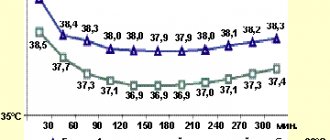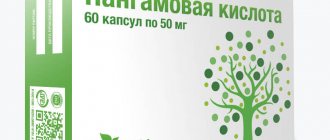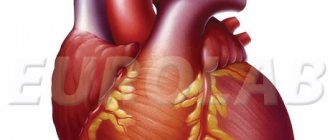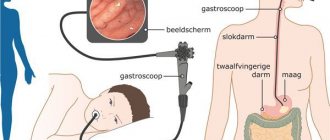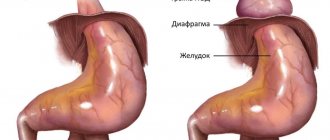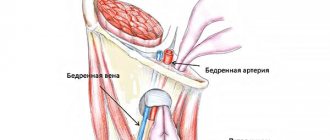Causes of the disease and predisposing factors
Premature babies are more often affected by the disease. According to statistics, every third child who was born prematurely is predisposed to the appearance of an umbilical hernia. Pathology is found in newborns, one-year-olds, and even those aged 6 to 8 years. Let's look at the issue “umbilical hernia in children - causes” in detail.
A congenital disease can be caused by the following factors:
- being born prematurely;
- heredity;
- infection in the womb;
- negative environmental factors, poor ecology in the region;
- weakness of the child's abdominal muscles inherited through genes.
What causes acquired pathology? The disease can occur due to the following conditions:
- colic in the abdomen;
- problems with the gastrointestinal tract (constipation, gas, bloating);
- lactase deficiency;
- early walking;
- hysterical crying or severe and frequent coughing, other reasons.
The disease can appear without certain prerequisites.
Postoperative period
After the baby wakes up from anesthesia, but not earlier than 12 hours after the operation, he can be given water. The liquid should be drunk in small sips.
A day later, when intestinal motility appears, the child can be offered broth (or light soup), jelly, kefir, compote and baked apple. On days 2–3, the menu is expanded by adding porridge, fruit puree and yogurt. Over the next 24 hours, the baby is gradually fed his usual foods.
From the first day, if the child actively moves and sits up, a postoperative bandage should be worn on the stomach. The baby should not leave the bed for the first 24 hours.
In the next two days, a gentle hospital regime is observed, that is, jumping, sudden movements, etc. are excluded. The bandage is used for at least 2-3 weeks. You can walk and move freely at home in it.
After 3-4 weeks, the recovery will be over, and the child will be able to begin living as usual. However, in the future it is better to refrain from excessive physical activity, in particular from physical education. No special rehabilitation is required after standard hernia repair in children.
Symptoms
Many parents are interested in what an umbilical hernia looks like in a child? It looks like a round formation in the navel area. The shape of the protrusion resembles a ball. The hernia is easily reduced inside. However, the above symptoms are typical if the umbilical ring is greatly expanded. If its expansion is not very large, then in the normal state of the child the protrusion is unnoticeable. It can only be detected when the baby cries a lot, laughs or coughs, i.e. for any tension in the child's tummy.
With an umbilical hernia in children, the symptoms may be as follows. Increased anxiety in the baby, especially when the weather changes. The child is more capricious than all other children. This is explained by the fact that infant colic is more painful for him.
Parents should be alert to such changes in the child’s well-being: vomiting, changes in sensitivity in the hernia area, and also if the location of the pathology has changed color and density. These signs may indicate a strangulated hernia. You should immediately contact a pediatric surgeon.
Causes of hernia
The cause of a hernia is weakness of the abdominal wall, which is not able to compensate for the increase in intra-abdominal pressure (for example, during heavy lifting, childbirth, defecation, strained cough, etc.). Defects in the abdominal wall resulting from surgery or injury can also lead to the formation of a hernia. The likelihood of a hernia increases with age-related thinning of muscle tissue and loss of elasticity. Congenital defects and hereditary predisposition matter.
Diagnostic methods
Only an experienced specialist can diagnose pathology. You need to visit a pediatrician. The doctor will make a preliminary conclusion and, if necessary, refer you to a pediatric surgeon for a final clarification of the diagnosis. However, one examination is not enough, since the hernia is not always noticeable and clearly visible. It can also be similar in appearance and symptoms to other diseases. Therefore, an additional examination is prescribed, which includes the following diagnostic methods:
- ultrasonography;
- general blood analysis;
- radiography;
- herniography (the area of the hernia is examined using x-rays).
This examination is necessary to accurately prescribe treatment for an umbilical hernia in children.
Accurate diagnosis allows you to determine whether surgical intervention is needed or whether the problem can actually be solved in other ways. For example, with the help of therapeutic exercises, massage or using a fixing patch.
Features of treatment of umbilical hernia in children
If an umbilical hernia is detected in a child, how to treat it is the first question that interests parents. You should understand what determines the choice of treatment method. If the hernia is small, minimal in size, and does not increase, it is quite possible to eliminate it without surgery. The well-being of the little patient is also important. If nothing bothers the baby, he feels well, the doctor will prescribe massage, gymnastics, and medication.
Taking medications is one of the treatment methods that a specialist can prescribe. The purpose of the medications in this case is to strengthen the walls of the child’s tummy. Often this treatment is accompanied by therapeutic massage, gymnastics, and wearing a bandage. When such therapy is unsuccessful, surgical removal of the umbilical hernia in children is required.
At the slightest sign of illness, you should contact your pediatrician. Experienced and caring specialists from JSC “Medicine” (clinic of Academician Roitberg) provide consultations in the center of Moscow, not far from the Belorusskaya and Mayakovskaya metro stations. If you need to clarify the diagnosis with a surgeon, your pediatrician will refer you to this specialist. Due to the fact that our clinic employs doctors from 66 medical specialties, you can undergo all examinations and receive consultations from highly specialized specialists in one building.
How to recognize an umbilical hernia
You are unlikely to be able to feel a small discrepancy between the sheets of fascia (“gap” between them), or a very small hernia that can be closed with a massage. There are no symptoms or indirect signs that could serve as a clue. For this purpose, there is a consultation with a pediatric surgeon, who examines dozens of children, and may well identify the problem at a stage when only conservative treatment such as massage can be done. In a controversial case, the doctor can always use ultrasound diagnostics.
A large hernia is a periodically appearing (during moments of straining, crying, coughing, physical stress in older children) or a permanent bulge in the child’s navel. This situation 100% requires surgical intervention.
Massage
This procedure is allowed within a couple of weeks after the baby is born. Namely: as soon as the umbilical wound has healed well. A pediatrician at our clinic can teach you this. Having mastered the principle and technique of therapeutic massage, you will be able to carry out the procedure yourself at home. What is the difference between massage for an umbilical hernia in a child? Its peculiarity is that before the manipulation, the hernia site is sealed with an adhesive plaster. This action is necessary in order not to injure the hernia and prevent its prolapse. Massage movements of the hands should be light and not forceful. There is no need to put pressure on the baby’s belly; try to do everything gently and carefully.
How to determine an umbilical hernia and its pinching in a baby?
Abdominal pain in a child with an umbilical hernia is a sign of problems! When pinched, part of the trapped organ is not supplied with blood! And if the situation is not corrected in time, this part may become dead.
We offer introductory symptoms to identify a pinched umbilical hernia:
- Sometimes the intestines become trapped in an umbilical hernia. This is called a strangulated hernia. When this happens, the baby usually experiences a lot of pain and the lump may be hard and red . Urgent medical examination is necessary to repair the hernia in time to prevent possible damage to the intestines.
- If the child does not experience a painful reaction when touching the arch, the arched bursa can be lightly pressed on the abdomen. If the newborn does not show signs of pain, does not cry or grimace, then everything is fine.
- A sign of possible problems, even in the future, will be pain in the child's abdomen, especially after active movements. For example, you did morning exercises for your child, and he starts crying a lot. This is confirmation that you need to see a specialist.
- Sometimes additional ultrasound examination may be required. It serves to monitor the progress of an umbilical hernia. Especially if the bulge is relatively large and may contain loops of intestine, ultrasound is necessary for further examination.
Pinching!
Visit your doctor in the following cases:
- The bulge becomes painful
- Vomiting and/or diarrhea occurs when the bulge is present
- The belly is getting bigger
- Body temperature rises
- The bulge becomes more swollen, discolored, or bluish-red
- The bulge no longer hides back into the abdominal cavity
An umbilical hernia is usually harmless to the baby. Basically, it disappears on its own within the first 3 years of life. And in very rare cases, there is a danger that the intestines will get into it and pinching will occur. In adults, the percentage of this danger is much higher.
If an umbilical hernia does not go away on its own by age three, it should be surgically repaired before preschool age. The operation is usually performed from the age of 5, but much depends on the situation. If surgery is not performed in time, the risk of pinching increases. In girls, an existing umbilical hernia can create problems with later pregnancy.
Physiotherapy
Often, umbilical hernia in newborn children can be well cured with the help of therapeutic exercises. In our clinic, experienced specialists will select the necessary set of exercises for the child.
You can also do some exercises on your own at home. For example:
- before feeding the baby, place the baby on his tummy (for a couple of minutes);
- turn the child onto the left and right side alternately for a couple of seconds;
- turn the child to face you and, holding his head, tilt him back slightly;
- when the baby is lying on his back, carefully lift him by the arms, while supporting his back (the head and legs hang freely);
- Also, while lying on your back, carefully turn the baby onto his tummy;
- Place the baby on a bulky ball and roll it around, holding it by the legs.
Children under 8 years old can visit a trainer and do exercises with him. Such services are also available in our clinic.
Treatment at home
Small umbilical hernias (up to 3 cm) go away on their own when the child reaches three years of age. Doctors say that no active action is required to cure them. However, with large formations, for the purpose of prevention and to reassure parents, pediatricians give recommendations for conservative treatment.
It must be comprehensive, systematic and long-term. The plan of therapeutic measures is selected by the doctor. If the baby’s family members agree to strictly follow the doctor’s instructions, the treatment process begins.
Popular methods of dealing with umbilical hernia include:
Bandage (belt, corset)
The special bandage BG-101D and other children's models are used in combination and with the progression of pathology. You should not purchase the product yourself; it should be chosen by a doctor. The doctor explains to parents how to use the bandage correctly.
The bandage belt allows you to securely fix the hernial sac inside the abdominal cavity, equalizing internal and external pressure. It performs the following functions:
- prevents internal organs from coming out;
- has a weak compression effect in the umbilical area;
- is a kind of corset for the muscles of the abdominal wall;
- prevents hernia strangulation.
The device is used as an independent method of treatment, and in the pre- and postoperative period. Externally, the product looks like a wide belt with fastenings. It is made of hypoallergenic material.
However, if the baby experiences an allergic reaction when using it, the treatment is canceled.
You should not wear a bandage in case of complicated hernias or in the presence of skin diseases at the site of fixation.
The doctor decides how long to wear the bandage belt. The doctor must also correct the umbilical hernia before using the device for the first time. Parents can then do this. The scheme for putting on the bandage is as follows:
- put the baby on his tummy for a few minutes to let the gas go away;
- carefully examine the baby’s skin on the back and stomach, assess the condition of the hernia - the skin everywhere should be clean and dry;
- lay the belt on a hard surface;
- place the child on it with its back down;
- carefully straighten the hernial contents and fasten the belt, making sure that the belt is located exactly in the navel area (one parent can help the other by holding the baby);
- wear the device no more than 12–16 hours a day, removing it at night.
As a rule, after two months of wearing a bandage, small hernias successfully regress. This treatment method is optimal and safe in most cases.
Patch
You can buy an umbilical hernia patch at a regular pharmacy. The contraindications for it are the same as for the bandage. The doctor must direct the hernial contents into the abdominal cavity before the first gluing. He trains parents.
The patch can then be removed at home. However, if the sealing is done incorrectly, the risk of complications is very high, so it is still recommended to entrust the replacement procedure to a specialist.
In Soviet times, an ordinary adhesive plaster was used, which often caused unwanted local reactions.
Nowadays modern hypoallergenic products have appeared.
The most popular is the Porofix patch, which is made of waterproof material, which allows you to bathe your child without removing it. The navel must be sealed for 10 days, then replaced. The duration of the course is determined by the doctor. If any skin manifestations appear in the area where the product is applied, it must be immediately removed and treatment discontinued.
Taping
Kinesio taping has gained particular popularity recently. It is used to treat many diseases of the musculoskeletal system. However, pediatricians recommend refraining from gluing tapes to infants.
Scientific studies have not been conducted to confirm the safety and effectiveness of this method. Applying tapes to the umbilical area is dangerous.
Massage
Massage, like gymnastics, is, in principle, recommended for all infants. However, you need to massage a child with an umbilical hernia correctly, otherwise the effect may be negative. In order not to harm the baby, it is enough for the mother to learn how to perform simple actions by watching how a specialist does it.
First, perform circular stroking movements on the tummy (strictly clockwise, along the loops of the large intestine), then counter stroking, then pinching around the navel.
The massage is combined with placing the baby on his tummy and turning him on his side. This allows you to strengthen not only the rectus muscles, but also the oblique muscles of the anterior abdominal wall. Typically, massage procedures are done in the evening, after bathing, when the baby is as relaxed as possible.
Strengthening poses (laying on the stomach)
This is the simplest and most obvious way to strengthen your abdominal muscles. Each time before feeding the baby should be placed on the tummy. It should lie there for 10–15 minutes. Naturally, the hernial contents should be in the abdominal cavity.
Exercise therapy (gymnastics)
Young children should perform physical therapy under the supervision of professionals. An anti-hernia set of exercises is aimed at strengthening and improving blood circulation in the anterior abdominal wall. This includes:
- encouragement of turning over and twisting legs in the air;
- squatting with adult support;
- exercise on a fitball, etc.
The older the child, the more varied the activities will be. Exercise therapy is carried out only in fixing devices (bandage, regular plaster).
Copper nickel
Since ancient times, people have had a method of attaching a five-ruble coin to the navel (sometimes they use a ruble or a kopeck). Modern medicine has proven that this ancient method of treatment with copper is not only useless, but also dangerous. By resorting to such “treatment”, parents expose their baby to a huge risk of developing navel omphalitis (inflammation of the navel) and other serious consequences. Therefore, no manipulations with placing a nickel on the navel should be done.
Using an adhesive patch
This remedy can be used for newborns as soon as their umbilical wound has healed. The patch is glued so that a small fold is formed. The course of wearing the patch is 10 days. Typically, three courses are required with breaks in order to completely eliminate a hernia in an infant. The patch must be selected from a hypoallergenic material that allows air to pass through, so as not to irritate the baby’s sensitive skin. To ensure that the treatment of the disease is as effective as possible, it is recommended to combine the use of the patch with other methods. In this case, the result is more stable.
Operation
Sometimes elimination of pathology is only possible through surgery. In our clinic, umbilical hernia surgery in children is performed using gentle and safe methods.
The surgeon prescribes surgical intervention in the following cases:
- the umbilical ring is 2 cm in diameter or more;
- the hernia is strangulated and must be removed immediately;
- the child in whom the pathology is detected is more than one year old, and the disease is constantly progressing;
- the child is 4-5 years old, but treatment of the hernia did not produce results.
If the protrusion is small, the operation is quick, about 20 minutes. Here an incision is made above the navel, then the umbilical ring is tightened. You can use laparoscopy instead of this method. This method of surgical intervention usually has no complications, and there are no scars after it.
If the protrusion is large enough, hernioplasty is used. In this case, the formation is first reduced, and then a special synthetic mesh (like a patch) is installed on the hernial orifice. Subsequently, the mesh fuses with the tissues of the body and prevents the formation of a new formation.
Carrying out the operation
At the First Children's Medical Center, it is possible to perform an operation using open access (through an incision in the abdominal wall).
During the operation, the surgeon excises the hernia and pushes the contents into the abdominal cavity. Then manipulations are carried out with the tissues of the umbilical ring (strengthening the tissues to prevent relapse). After this, the navel is given an aesthetic appearance. As a rule, this type of operation lasts no more than half an hour.
Rehabilitation after surgery
Recovery after surgery varies. Children recover the fastest after laparoscopy. Since this method is the most gentle of all, rehabilitation here takes 2-3 days maximum. Most often, babies are discharged within a day after such an operation.
Now we’ll tell you how a child feels after an umbilical hernia operation performed in other ways. If the surgical intervention was planned and timely, then the rehabilitation period takes no more than 14 days. This means that the child was operated on while still in preschool age. In this case, there should be no complications. The doctor will prescribe the wearing of a postoperative bandage, as well as the diet necessary for the little patient. You will not be able to eat foods that can cause gas in the intestines for some time. Physical activity will also need to be temporarily reduced.
The rehabilitation process takes the longest for those children who were urgently hospitalized. If the operation was unplanned, the hernia was strangulated or the hernia sac ruptured, then a longer recovery will be required. Usually, a course of medications and physical therapy are also prescribed.
How is the operation performed?
Planned hernia repair is performed in a hospital under general anesthesia. The operation lasts 20–30 minutes. The surgeon reduces the hernial contents and sutures the hernial orifice; special meshes are not used in children.
There are several types of operations, which mainly differ in access, but their essence is the same. Previously, they used the same technique as in adults, according to Dyakonov - Mayo - Sapezhko. The Lexer method or the Spitz operation are possible. In the latter case, the postoperative suture will have a semi-oval shape.
Lexer method
Mayo method
Sapezhko method
Also, laparoscopy is now increasingly being performed, lasers and new minimally invasive, highly effective techniques are being used. The scar after such interventions is almost invisible (even if the hernia was large), and the patient can be discharged from the hospital earlier. However, such operations are performed for a fee.
How dangerous is a hernia, what are the complications?
It is important to know why an umbilical hernia is dangerous in a child. This will help avoid unpleasant consequences in the future.
If a hernia is strangulated or ruptured, you should consult a doctor as soon as possible. This situation poses a threat to the baby's life. Although hernia rupture is uncommon, it is best not to neglect precautions.
Parents should be alert to the following signs of a possible strangulated hernia:
- the child feels sick and/or vomits;
- there are traces of blood in the stool;
- the hernia cannot be reduced in a supine position.
You should immediately seek medical help if your child is crying particularly hysterically and has a very swollen tummy. You need to pay attention to whether the color of the hernial sac or its density has changed. If you have one or more symptoms, it is important not to waste time, but to seek help from a clinic.
Prevention
Many people are interested in the question of how to remove an umbilical hernia in a child? In this regard, disease prevention is very effective. Here are some preventive measures to help your baby stay healthy:
- breast-feeding;
- diet of a nursing mother, which excludes the consumption of foods that cause gas formation;
- It is necessary that the mother who is breastfeeding her baby eats a balanced diet, eats healthy and nutritious food;
- if the child is bottle-fed, it is necessary to carefully select the milk formula;
- it is necessary to ensure that the baby does not catch a cold and cries as little as possible - coughing and crying can also cause a hernia;
- It is useful to engage in physical education, swimming, and therapeutic massage sessions with your child.
Classification
There are several classifications of the disease according to certain criteria. The main thing is to distinguish types based on origin. There are two types:
- congenital or embryonic defects that occur in a child even at the stage of intrauterine development, they are caused by disturbances in the formation of the abdominal wall;
- acquired or postnatal hernias that develop in infants during the first 1–4 months of life.
Additionally, direct and oblique hernias are distinguished depending on the direction of the protrusion, as well as reducible and irreducible.
